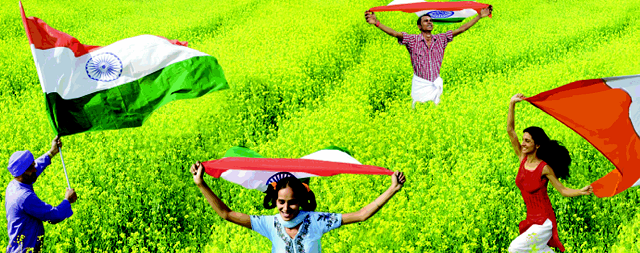The key players are the United Progressive Alliance (UPA) which has been at the helm since 2004 and the National Democratic Alliance (NDA) who were in government for a full 5-year term before that. These are coalitions cobbled together with regional parties, who have their own interests to protect.
The UPA government has been in power for the last almost a decade and will be completing two full terms at the helm next year. The last couple of years have been quite torrid for the UPA government with a slew of corruption scandals rocking it. But the unfortunate part is that the government has not handled these sticky situations effectively, leading to it being accused of implicit complicity. Slowing economy, depreciating Rupee (Indian Currency) leading to inflationary trends and most important, the policy paralysis that has gripped the government during the last two years, could take their toll in the coming elections.
The UPA government has been accused of its inability to push through key policy measures in the Parliament, which has led to reduction in Foreign Direct Investment (FDI) and increase in fiscal deficit, key factors for economic growth. But that’s easier said than done when you have enemies within – coalition partners, who have their own agenda and constituencies to please. They are as good, if not even more effective, as the opposition in scuttling key economic initiatives. The strengthening Dollar and the slow recovery of the US economy have only added to their woes.
But it must be said that the UPA government, despite the ‘combined’ opposition, has pushed through some key reforms like Foreign Direct Investments (FDI) in Retail, giving the retail industry a big boost. Other reforms are also planned in the areas of Insurance, Infrastructure, Pension and Corporate Laws. All these are expected to give the economy the desired impetus and an indication of the same is the rising Stock Market index in recent months.
NDA, the main opposition has its own set of problems. Unlike the UPA where there is atleast concurrence on the issue of secularism among the constituents, in the NDA, clash of ideologies and interests is throwing up serious challenges on concurrence for their strategy for the 2014 elections. Do we go the ‘Hindutva’ (Hindu religious ideology) route or push development and reforms? This clash between ideology and pragmatism is the reason behind NDA’s inability to clearly articulate on its manifesto for the 2014 elections.
There are states run by the NDA’s constituent parties that have performed well on industrial and infrastructure development in their state and helped to lower poverty levels. They hope that this collective experience and performance would help its cause when it faces the people in 2014.
The NDA’s current headache seems to be with deciding on whom to project as their Prime Ministerial candidate next year, with many eminent leaders considering themselves more than equal for the top job. This is something that the UPA does not have to deal with as, following tradition, they are expected to do as per the dictates of the High Command. There is no place for personal aspirations here. The NDA suffers from a ‘problem’ of plenty while the UPA … well they follow orders. This is not to say that the UPA does not have potential candidates.
The question is which is the horse to bet on?
This is where regional parties will tilt the balance and also call the shots at the time of cobbling together a coalition as well as a government. So forming the right partnerships at the regional level will go a long way in deciding who will govern.
The Key Vote Banks
Many political parties have traditionally depended on the rural population to vote them to power, as strong regional influences and the lack of education and awareness makes it easy to convince them. Whilst the rural voter will still play a key role, there is a growing feeling that this may not be so significant this time as in the past.
The segments of society who are expected to significantly influence on who will govern India post 2014 are the Muslims and the youth of India. The Muslim population is close to 150 million, while the youth (18 -34 age group), knowledgeable and articulate, form about 35% of the population at around 450 million. Together they represent almost half the population of the country. They have their own aspirations and are intelligent enough to not be moved by election rhetoric and propaganda. These important segments aspire for greater political participation, engagement at a policy level and urgent attention to improving their quality of life.
Political parties that are able to clearly articulate and outline their plan towards – (a) helping all segments of society move closer to their aspirations; (b) initiating development and reform policies to fast track economic revival; (c) bringing more transparency and accountability in governance; (d) curtailing rising prices and inflation; and (e) putting in place a concrete set of actions to bring down poverty and increase literacy, will reap a rich harvest at the hustings in 2014 and may well get a representation in the new government.
The noise is yet to start. All parties are girding their loins and getting ready for battle. It will be interesting to see who is victorious and who has been vanquished once the dust settles. In the meanwhile speculations will abound and talk shows and TV anchors will do everything to improve their TRP ratings.






Be the first to comment on "Analysis: 2014 General Elections in India – Who’s next?"